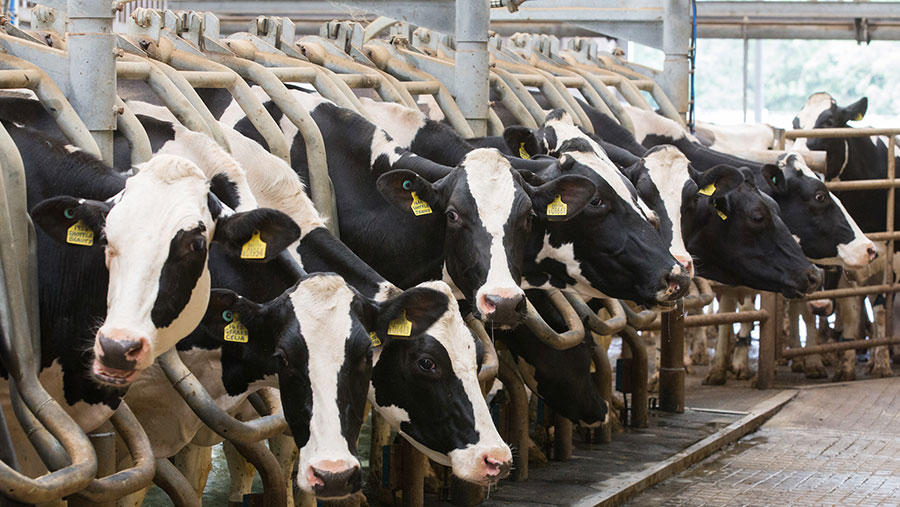‘Increasing dairy herd size doesn’t increase drug use’
 © Tim Scrivener
© Tim Scrivener A study has busted the myth that higher antibiotics use is inevitable in larger dairy herds compared with smaller ones.
Research, led by dairy consultancy Kite, studied 350 dairy farms varying from 50 to 600 cows and found no correlation between antibiotics use, herd size and milk yield.
See also: Review finds 11 barriers to reducing on-farm antibiotics
The study, completed in conjunction with a number of processors and retailers, compared a range of UK systems including organic dairies. They found:
- Antibiotics use varied from just over 0mg/kg to the highest 70mg/kg.
- There was no correlation between drug use and herd size or system.
- There was a wide range of drug use across all herds with both high and low use in large and small herds. One small herd (under 100 cows) used 30mg/kg compared with another 600-cow herd that used just 10mg/kg, for example.
- Based on a per litre parameter, larger herds were better because their cows were typically higher yielding. Therefore, there was a dilution of scale.
Vet Duncan Williams, who led the study, said: “Increasing herd size doesn’t increase drug use.”
He added controlling antibiotics use is more intrinsically linked to the farmer’s management and attitude than anything else.
“It doesn’t matter what the system is it’s how well you run it.”
He said those farmers who worked closely with their vet, generated data on antibiotics use to identify areas for improvements and put proactive protocols in place to manage disease, were more likely to be successful in reducing the number of drugs administered.
